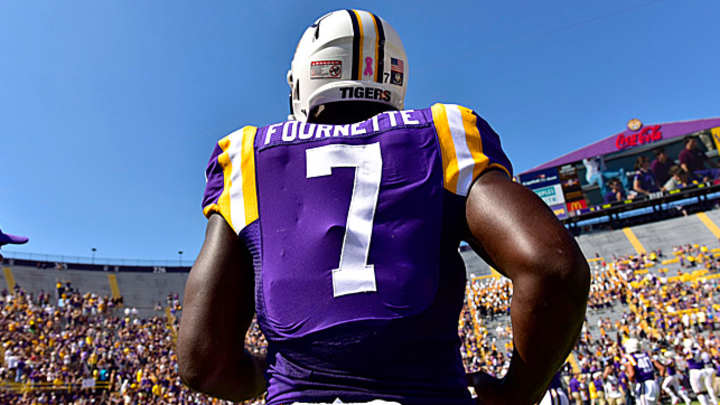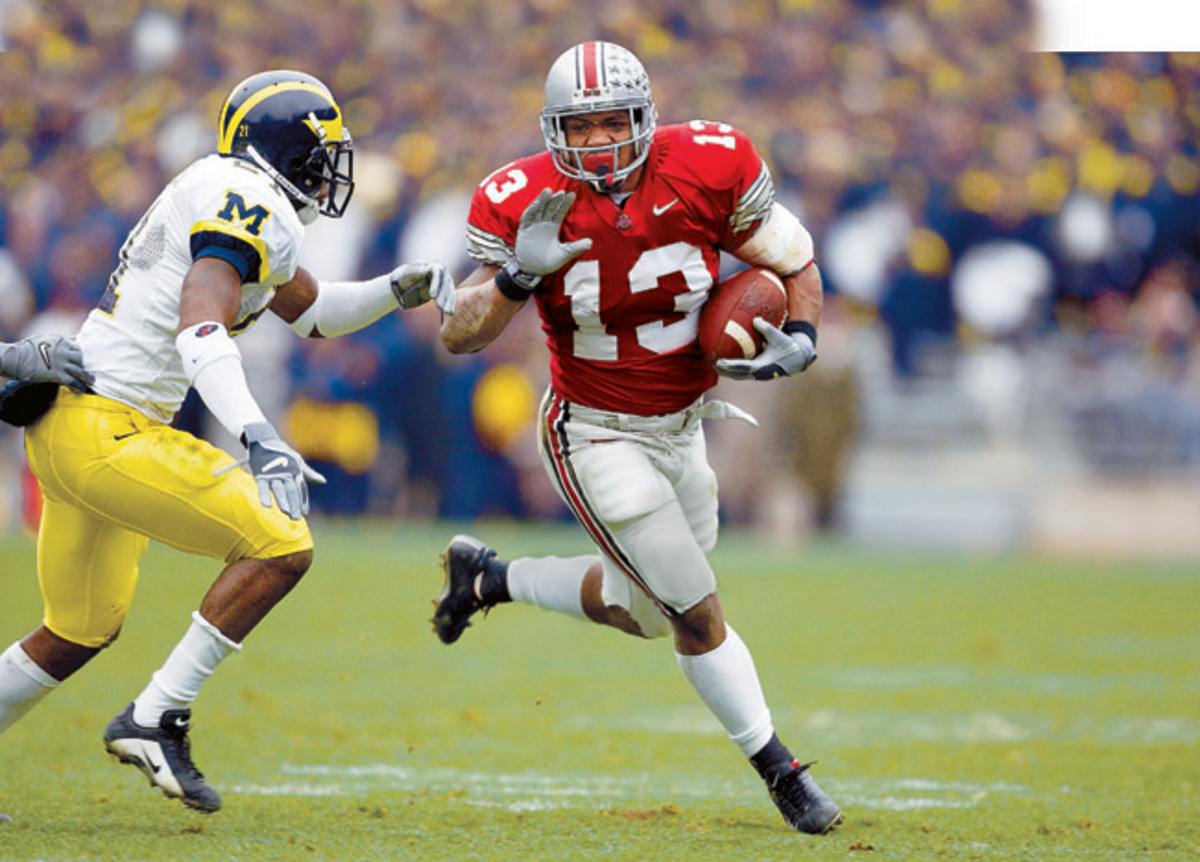Leonard Fournette Plays the Waiting Game

Prompted by the individual brilliance of true sophomore LSU running back Leonard Fournette, the NFL’s draft eligibility rule (the Rule) is now a discussion point in football conversations, as if brought out of mothballs after sitting dormant for years. I have always found it interesting that rules such as this one—with eligibility only granted to players at least three years removed from high school—can be in place for decades and accepted as the norm until, of course, an exceptional case comes along and sparks the debate. Indeed, there was scant talk of the Rule six weeks ago, before Fournette’s weekly breakout performances—and the knowledge that he is prohibited entering the NFL until 2017—inserted the Rule into the discussion. Let’s examine.
Sotomayor Save
From a legal perspective, the Rule faced a previous attack and potential eclipse eleven years ago. Ohio State running back Maurice Clarett was, like Fournette, a player demonstrating NFL-ready skills at a (per the Rule) NFL not-ready age. Clarett then took a bold step that Fournette is virtually certain not take; he went from being a running back to being a litigant. Clarett v. NFL was brought as an antitrust lawsuit challenging the legal validity of the Rule. There were lawyers.
Clarett actually defeated the NFL in the district court, which found the Rule to be an antitrust violation, causing widespread panic in the league. As general counsel of the Packers, I had a steady stream of executives, coaches, scouts and administrators in my office asking questions such as: What does this mean? Do we have to start scouting true sophomores? True freshmen? High school players? We’re going to hire a bunch of new scouts, right? As I tried to get everyone to take a deep breath, the NFL scouting community felt the world, as they knew it, had ended.
The NFL did its best to tamp down the panic meter, assuring teams that the decision would not stand upon appeal to the Second Circuit Court of Appeals (sound familiar?). And they were correct: the Second Circuit suspended the lower court ruling, opining the Rule “was necessary to safeguard the NFL from harm” in an opinion was written by now-Supreme Court Justice Sonia Sotomayor (Thank you, Sonia! rattled through NFL league and team offices). Clarett did not appeal to the United States Supreme Court and went from an erstwhile champion of sports law and potential first-round pick as a sophomore to a man without a team and the last pick of the third round in the subsequent draft (to the Broncos) before washing out soon thereafter. But for an NFL-friendly Second Circuit Court of Appeals—and Judge Sotomayor—Clarett could have been a sports law game changer. But alas, the Rule was sanctioned, and is now embodied in the recent CBA as Article 6, Section 2(b).
To Play or to Preserve
The very moment Jadeveon Clowney imploded that poor Michigan running back in a New Year’s Day 2013 bowl game, I said to no one in particular: “Game over; he’s the No. 1 overall pick in the 2014 NFL draft (16 months later).” There seemed little, other than a catastrophic injury, that could have derailed his ascension to the draft’s top pick, which would have been in 2013 but for the Rule. And, of course, what followed was a 2013 season at South Carolina saturated with questions about his motivation and phantom injuries, all of which did nothing to deter the Texans from drafting Clowney first overall.
This past Saturday, Georgia running back Nick Chubb suffered a serious knee injury. Chubb had displayed NFL-ready skills last year as a replacement for Todd Gurley, who had shown NFL-ready skills the year before. Of course, in both cases, the players were unable to apply for the draft following those breakout seasons. Another collegiate star who suffered an injury this year, UCLA linebacker (and sometimes running back) Myles Jack—a year ahead of Chubb and able to enter the 2016 draft—has already left college to prepare for his next play to be a paid one.
Now comes Fournette, clearly an imposing talent no matter the age, who is unable to enter the NFL next year as per the Rule. Although Fournette certainly does not appear willing to engage in a legal challenge as Clarett did, there have and will continue to be suggestions that Fournette shut down competitive football in January and spend next year at a draft-preparatory facility (there are many) with expenses covered by one of many willing agents. Fournette’s tweet on the subject—“I will never jump ship... I'm drowning with my brothers”—indicates the chances of that happening are remote. However, the day will come where this unintended consequence of the Rule, for the rare player of that age and ability, does occur, setting precedent that the NFL and NCAA would not at all like.

Running Back Redux
Having been on all sides of the business of football, I feel for Fournette—and Clarett, Gurley and Chubb—more than I did for Clowney or players at other positions. Running backs have the shortest shelf life of any position and teams are showing an increasing reluctance to not only reward them with third contracts but even with lucrative second contracts. The Cowboys’ handling of DeMarco Murray is a stark illustration of the cutthroat treatment plan teams consider with running backs: Murray had high usage while playing on his fixed and reasonable rookie contract and then was allowed, perhaps encouraged, to play elsewhere when his free agent status demanded higher wages for older years. Despite outliers such as Adrian Peterson and Frank Gore, the NFL running back position continues to get younger (and cheaper).
There has been talk of unionization of college players, and there was even a favorable early ruling that Northwestern football players could unionize (although the NLRB muted that process). Running backs face career challenges that call for a union of their own.
From a purely business perspective, there is some benefit to Fournette saving the 300-plus carries he would project to have in 2016 for use by a high-paying NFL team rather than a non-paying college one. With only so many productive carries in a career, the argument can be made that he not give away a percentage of those in the name of school spirit rather than what is best for his financial future. Again, that is the stark business approach, one that the NFL, the NCAA (and certainly LSU) does not want to hear. As to those stakeholders.
Rule Beneficiaries
The purpose behind the Rule—as explained to me by both NFL and NFLPA leadership—is to protect college players presumed emotionally or physically not yet ripe for the brutality of the NFL. Fournette’s rare ability, however, points to the arbitrary nature of the Rule. As any parent with more than one child knows, everyone matures at a different pace; there is no standardization to physical or emotional maturity. To say that all second-year collegiate players are not ready for the NFL but then magically ready when the clock turns past their third year is certainly arbitrary.
Beyond the players, however, the Rule (1) allows NFL team scouting operations to focus on a finite number of players, and (2) protects NFL general managers—prone to take chances on younger players for “upside” —from themselves, and (3) preserves an important relationship with the NCAA, home of the NFL’s built-in developmental system.
The NCAA wisely relented on another “rule” affecting Fournette this past weekend, allowing him to sell his jersey and donate the proceeds to South Carolina flood victims; LSU’s athletic department initially believed he could not. Whether it was a knee-jerk response to public shaming or an effort to get on the good side of Fournette, who is stuck with them for at least another year, the move made obvious sense.
Low Priority
Now that collegiate unionization efforts have stalled, one has to wonder: Who is going to advocate for the interests of Fournette and players like him? The NFLPA already sacrificed incoming rookie pay in the 2011 CBA negotiations; they are certainly not going to make draft eligibility a priority in the next CBA. And even if they did, of course, the NFL would want something in return.
The Rule, which is not going anywhere, will remain a topic of discussion as long as Fournette continues to rack up mammoth performances. At some point, however, discussion of the Rule will fade and lie dormant again, perhaps for years, until the next Fournette—another transcendent talent less than three years removed from high school—emerges.
